
How to make Japanese sword / No.1
0.MAGANE-FUKI or KANE-TUKURI ( Preparing Raw Materials )
Preparing raw materials is the first step for making a KATANA. Most famous way to make them is called a TATARA-SEITETSU (Japanese style smelting), making TAMA-HAGANE (Japanese steel), from SATETSU (iron sand) and SUMI (charcoal).
SATETSU (iron sand) and SUMI (charcoal)
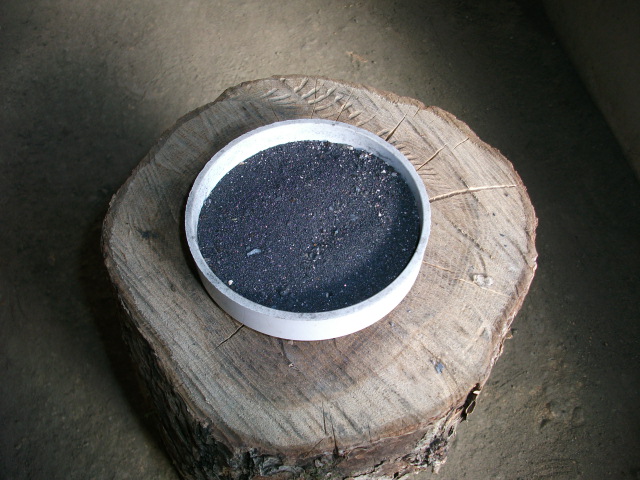
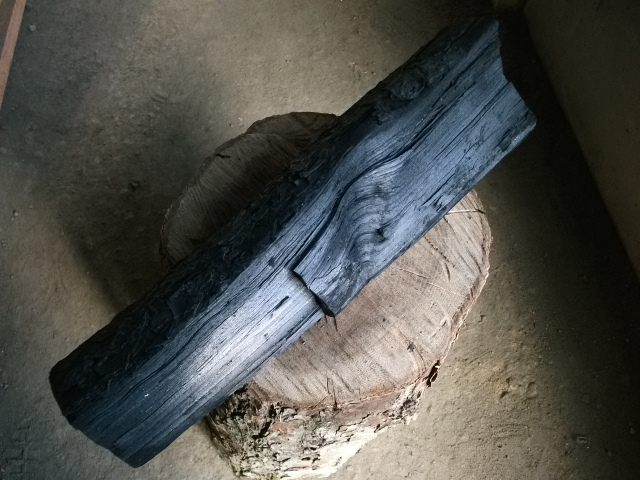
A TATARA is a trough-like furnace made of clay, about 1m (3.3 feet) tall, 3m (9.8 feet) long, and 1.2m (3.9 feet) wide.
Smelting process continues three days, adding SATETSU (iron sand) and SUMI (charcoal) in the TATARA one after the other.
The amount of SATETSU (iron sand) and SUMI (charcoal) is about 9 to 13 tons each. Finally about 3.5 tons of a mass of KERA (steel block) remains at the bottom of the TATARA.
The mass is crashed down and break up into large pieces, and inspected and sorted into 8 kinds of WATETSU (Japanese iron). Final amount of weight is about 2.5 tons.
Completed TAMA-HAGANE (Japanese steel)
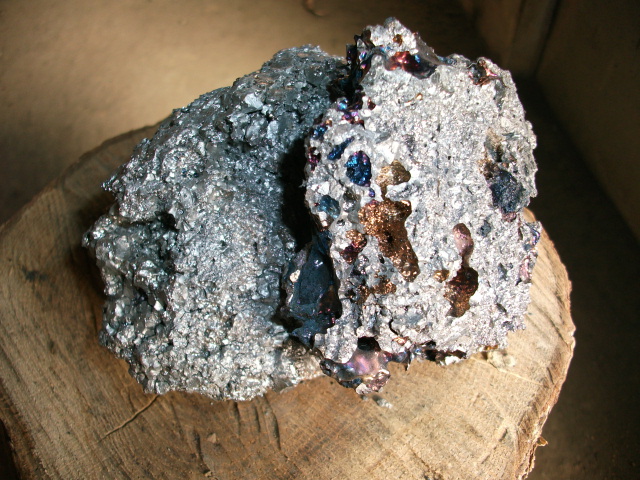
1.MIZU-HESI & SEN-BETU ( Re-melting for Carbon Control and Selection )
In the first place, TAMA-HAGANE (Japanese steel) is heated till it becomes red and hammered into a flat sheet of 5mm (about 0.2 inches) to 9 mm (about 0.35 inches) thick. And then it is put into water and quickly quenched.
This process is called MIZU-HESHI.
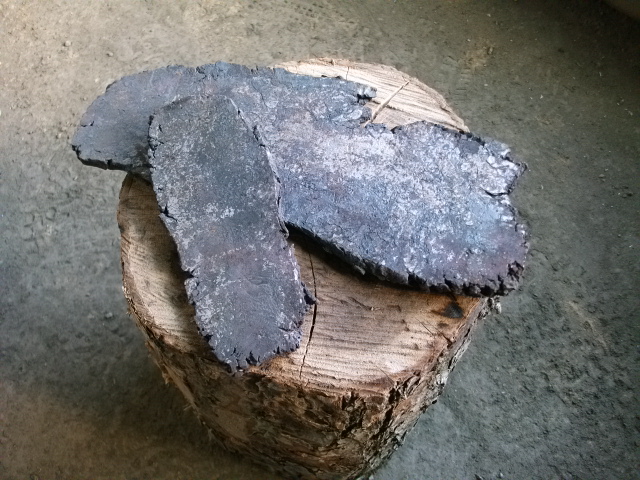
A completed plate of TAMA-HAGANE (Japanese steel) is broken into almost 2 cm (about 0.79 inches) to 3 cm (about 1.18 inches) square wafers. And the wafers are classified into several kinds of type.
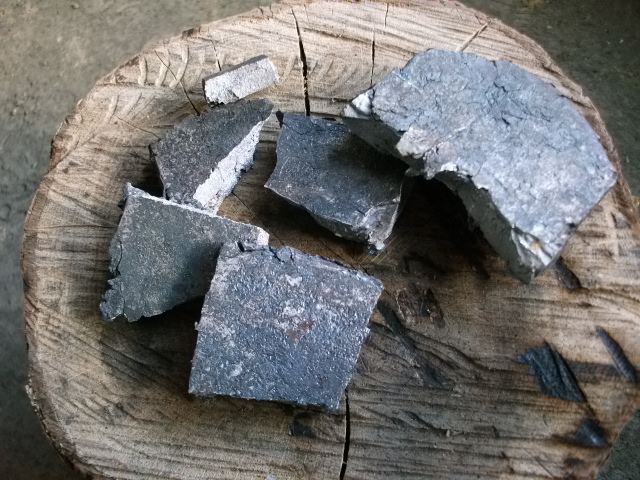
All TAMA-HAGANE is selected in this way because there are lack of ingredient balance and impurities even in one TAMA-HAGANE.
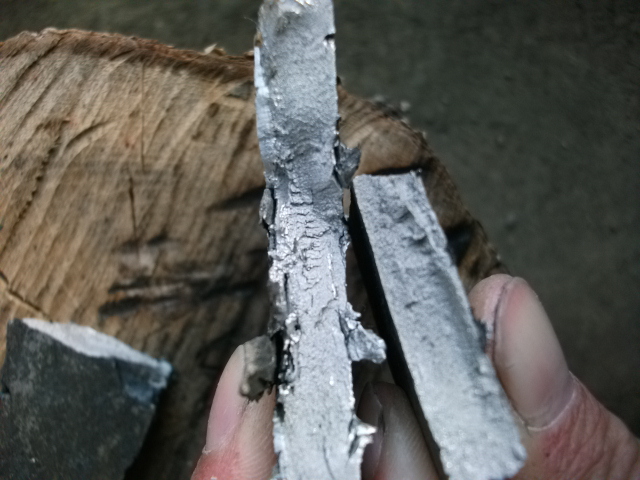
Right one in the photo above is hard and left one is soft. Do you see the difference between them?
Process move to next step after amount of each type of the wafers are prepared.
2.TUMI-WAKASI ( Element Adjustment )
The wafers selected for TUMI-WAKASHI are stacked on a steel plate welded to a long stick, called TEKO-BOU.
They are arranged less gap and easy to remove impurities.
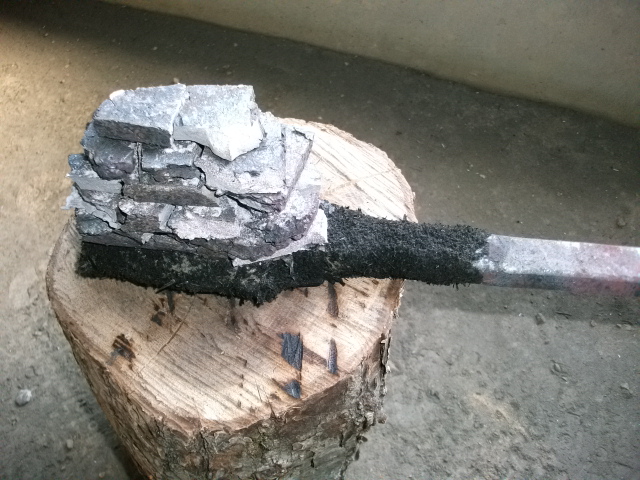
The steel is wrapped in WASHI (Japanese paper), a clay slurry and rice-straw ashes are poured over it, and placed into HODO (a forge). After reaching between 1300 degrees C and 1500degrees C, the steel is removed from the forge and hammered down on to fuse all the wafers together.
This clay slurry and rice-straw ashes help prevent melting of the surface of the steel, oxidation, and fusing all the wafers.
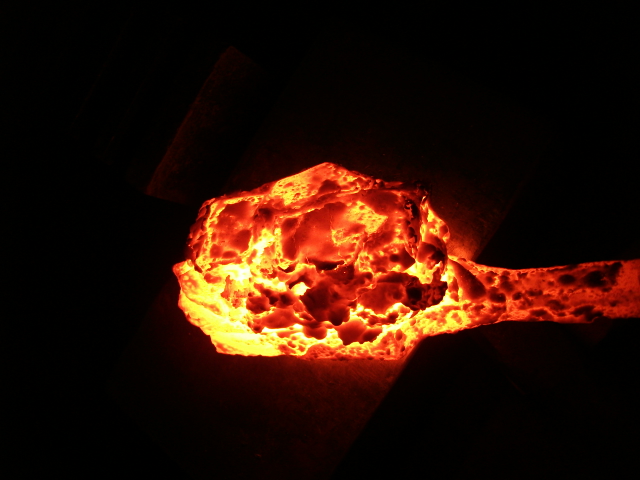
You could see the slight imprint of the pieces of the wafers on the block if you take a good look at the photo above.
A name of this process gTUMI-WAKASHIh comes from a sound like a boiling (boil = WAKASU) water comes from HODO (a forge) when the temperature of the steal reaches to suitable for forging.
How to make Japanese sword / No.2